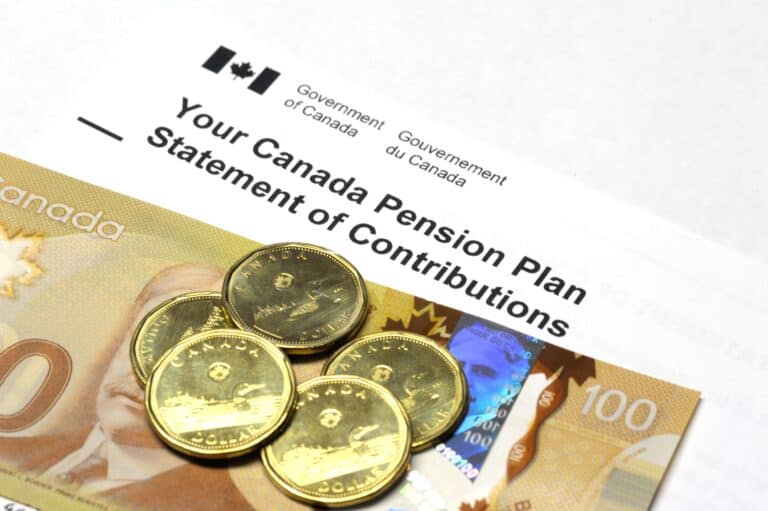Average CPP Benefits at 60, 65, and 70 in 2024: What to Expect

Written by Andrew Button at The Motley Fool Canada
Have you ever wondered how much Canada Pension Plan (CPP) you would get if you took the benefits at a particular age? As you may know, the annual benefits increase with each year you delay taking benefits. Given Canada’s average life expectancy of 81.75, cumulative lifetime benefits are maximized by taking benefits at age 65. Those who have very long life expectancies for whatever reason may benefit from taking benefits at age 70.
In this article, I will explore how much you can expect to get in monthly CPP benefits at age 60, 65, and 70.
Age 60: $532.43
At the age of 60, most Canadians are likely to be getting $532.43 in CPP benefits. Unlike the figure for age 65, this one is just an estimate. The Government publishes an official “average CPP estimate” for Canadians taking CPP at 65 each year. If you take the amount and reduce it by 36%, you arrive at $532.43. That’s based on the CPP formula. There are factors that could cause the actual average to be different.
For example, if the average person taking CPP at 60 differed from the average person taking CPP at 65 in terms of hours worked, their amount may be different from what I estimated here. However, the “true” average is likely to be close to this estimate.
Age 65: $831.92
$831.92 is the average CPP payout for someone taking benefits for the first time at age 60 in 2024. This estimate is published directly by the Federal Government, so it is almost certainly accurate. $831.92 is a nice improvement over the amount that Canadians get by taking CPP at age 60. However, it’s still not enough to make ends meet in most Canadian cities. For example, it isn’t sufficient to cover rent on a one bedroom apartment in Toronto.
Age 70:
Canadians who take CPP for the first time at age 70 receive 42% more than Canadians who take CPP at age 65. So, assuming that they are otherwise identical to Canadians taking CPP at age 65, they receive $1,181.32 on average. That’s a pretty nice increase over the amount that you’d receive by taking CPP at age 65. However, it’s still not enough to cover the average Canadian’s living expenses.
Worried you won’t get enough benefits? Invest in an RRSP
If you’re looking at the figures above and dreading not being able to pay the bills in retirement, don’t worry. There are ways to make your CPP go further. A good one is to invest your money. If you invest in stocks, index funds and other securities, you can receive passive income that helps you pay the bills in retirement. If you hold such investments in a Registered Retirement Savings Plan (RRSP), you don’t even pay taxes on them until you retire.
Consider Fortis (TSX:FTS), for example. It’s a dividend stock with a 4.2% yield. It has raised its dividend every year for 50 consecutive years and aims to increase its dividend by 6% per year through to 2028.
Fortis stock is well suited to being held in an RRSP. First, it produces dividend income, which can be used to pay for withdrawals without selling stock. Second, it is a Canadian company, so you pay no withholding taxes on the dividends. Third and finally, it’s a regulated utility, which means that it is very stable and protected by the government. On the whole, it’s a very good stock for income-hungry investors and retirees.
The post Average CPP Benefits at 60, 65, and 70 in 2024: What to Expect appeared first on The Motley Fool Canada.
Should you invest $1,000 in Fortis right now?
Before you buy stock in Fortis, consider this:
The Motley Fool Stock Advisor Canada analyst team just identified what they believe are the 10 best stocks for investors to buy now… and Fortis wasn’t one of them. The 10 stocks that made the cut could potentially produce monster returns in the coming years.
Consider MercadoLibre, which we first recommended on January 8, 2014 ... if you invested $1,000 in the “eBay of Latin America” at the time of our recommendation, you’d have $17,363.76!*
Stock Advisor Canada provides investors with an easy-to-follow blueprint for success, including guidance on building a portfolio, regular updates from analysts, and two new stock picks each month – one from Canada and one from the U.S. The Stock Advisor Canada service has outperformed the return of S&P/TSX Composite Index by 26 percentage points since 2013*.
See the 10 stocks * Returns as of 6/3/24
More reading
Can You Guess the 10 Most Popular Canadian Stocks? (If You Own Them, You Might Be Losing Out.)
How to Build a Bulletproof Monthly Passive-Income Portfolio in 2024 With Just $25,000
Fool contributor Andrew Button has no position in any of the stocks mentioned. The Motley Fool recommends Fortis. The Motley Fool has a disclosure policy.
2024

 Yahoo Finance
Yahoo Finance 